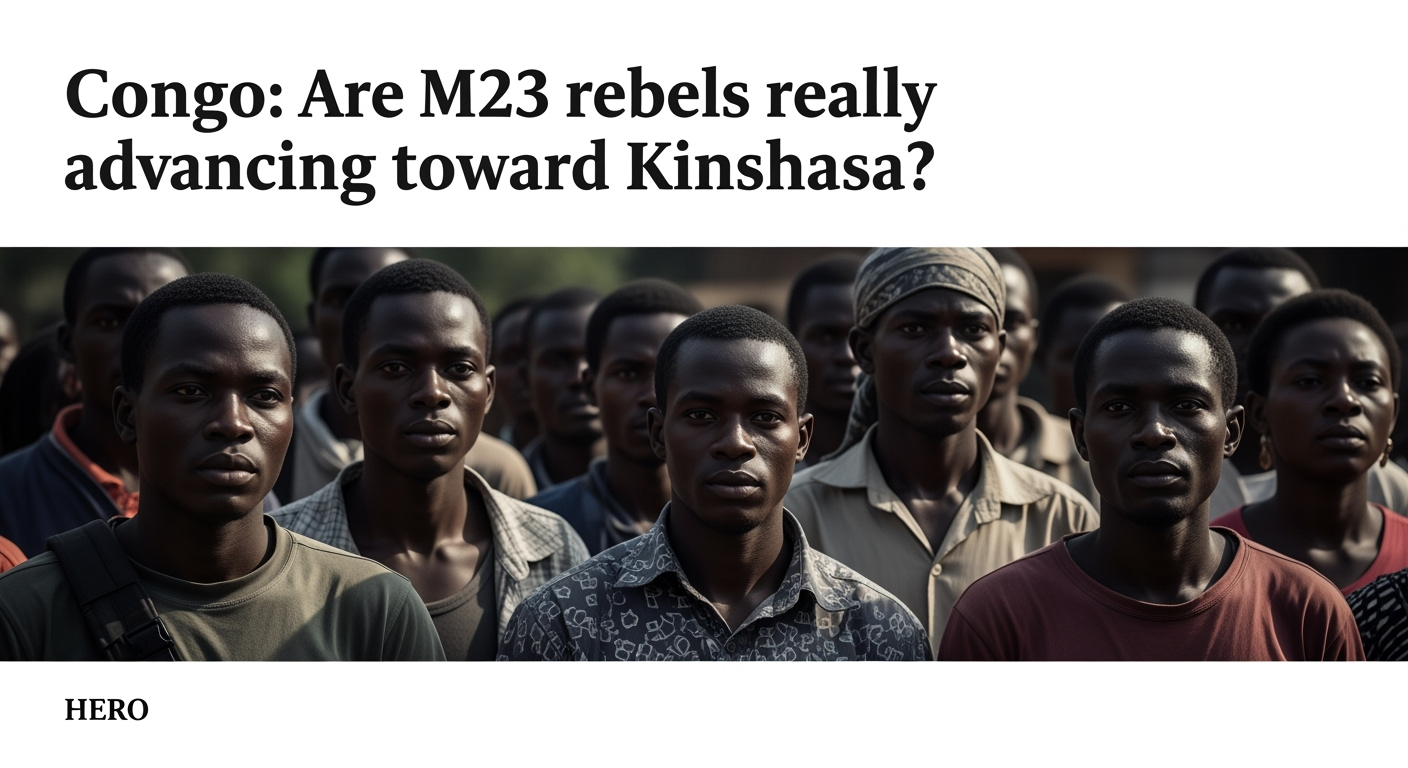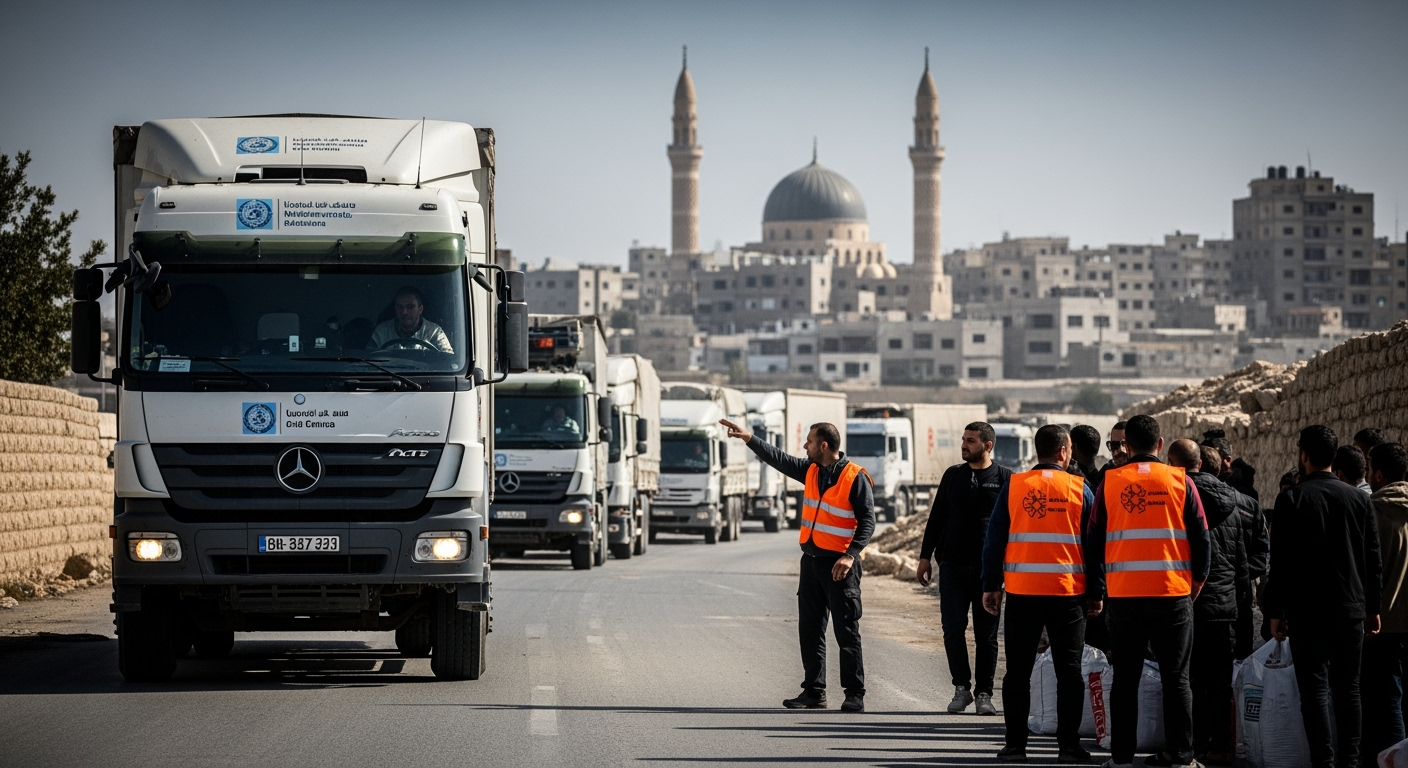Related Articles

M23 Rebels Intensify Eastern Offensive Amidst Rhetoric of March to Kinshasa

Turkey Emerges as Critical Player in Gaza Ceasefire Diplomacy





London, UK – A confluence of global economic pressures, spearheaded by the protectionist trade policies of the Trump administration, has inadvertently served as a powerful catalyst, forging an unprecedented economic alignment between India and the United Kingdom. While intended to rebalance global trade in America's favor, these tariffs compelled both nations to seek out new, reliable partners, culminating in a landmark Free Trade Agreement (FTA) that promises to redefine their bilateral relationship and reshape their economic futures.,
The aggressive tariff regime enacted by the Trump administration introduced significant volatility into the international trading system, creating a "rupture" in the established global order and prompting countries worldwide to reassess their trade dependencies.,, For both India and the UK, these policies arrived at critical junctures, spurring a strategic pivot towards each other. The resulting FTA, finalized in May 2025 and signed in July 2025, is not merely a bilateral accord but a testament to how external economic shocks can accelerate the formation of new, resilient partnerships.,,,
The Trump administration's trade policy, particularly during its second term, saw an expansive use of tariffs across a broad spectrum of goods and countries. From January to April 2025, the average applied US tariff rate surged from 2.5% to an estimated 27%, marking the highest level in over a century. Key measures included a universal 10% tariff that took effect in April 2025, alongside a significant increase in Section 232 tariffs on steel and aluminum to 50%.
The United Kingdom found itself directly in the crosshairs of this protectionist wave. In 2018, UK steel and aluminum imports to the US were subjected to 25% tariffs. By March 2025, these measures were reimposed, canceling previous quota arrangements and leading to a marked decrease in UK steel exports to the US and considerable financial losses for the industry., This persistent pressure underscored the urgency for the UK to diversify its trade relationships beyond traditional allies.
India faced even steeper challenges. The US levied tariffs of up to 50% on Indian imports, including a 25% reciprocal tariff implemented in August 2025, followed by an additional 25% penal tariff later that month.,, These tariffs were partly attributed to India's continued purchases of Russian crude oil amid geopolitical tensions., The duties significantly impacted India's labor-intensive export sectors, such as textiles, gems, and jewelry, with projections indicating a potential annual loss of approximately $40 billion in US-bound exports.,, This created considerable investment uncertainty and forced India to rapidly re-evaluate its global export strategy.,
Compounding the global trade instability caused by US tariffs, the United Kingdom's departure from the European Union in 2020 served as a profound catalyst for its reorientation towards new trade partners. Freed from the constraints of EU trade policy, the UK launched its "Global Britain" agenda, actively seeking to forge independent trade agreements worldwide., India, with its rapidly growing economy and vast market, became an increasingly attractive prospect.
For the UK, India's robust manufacturing capabilities, skilled workforce, and expanding consumer base offered a compelling complement to its own strengths in services, technology, and finance. While bilateral trade between the two nations had remained relatively flat since 2011, the post-Brexit landscape, coupled with the disruptive US tariffs, provided a fresh impetus to deepen their economic engagement., The realization that both countries faced external pressures demanding trade diversification created a powerful shared interest in a comprehensive partnership.
Under mounting pressure from US tariffs, India embarked on an accelerated strategy to diversify its export markets, expanding its focus to include 50 additional nations., This strategic recalibration aimed to reduce reliance on any single market and mitigate the impact of politically motivated trade measures. The Indian commerce ministry developed a multi-pronged approach encompassing export diversification, import substitution, enhanced competitiveness, and targeted sectoral support.
In this context, closer ties with the UK emerged as a crucial component of India's broader trade strategy. India's finance minister, while acknowledging the long-standing nature of India-UK trade talks, noted that the prevailing global uncertainties were "driving many countries to clearly be active on [seeking] bilateral arrangements" that transcended traditional ties. The explicit objective was to create a more resilient and stable export environment, shielding Indian industries from external shocks. The proactive pursuit of agreements with the UK, Europe, and ASEAN nations demonstrated a clear message that India would not succumb to trade threats.,,
The heightened geopolitical and economic pressures ultimately paved the way for the groundbreaking India-UK Free Trade Agreement. Negotiations, which officially commenced in January 2022, progressed through 14 rounds, addressing complex issues ranging from tariff cuts on liquor to visa regimes and social security for skilled professionals., Despite initial delays, renewed political will following leadership changes in both countries saw negotiations gain momentum.
The agreement, hailed as "historic" by both Prime Minister Narendra Modi and UK Prime Minister Keir Starmer, is projected to usher in a new era of economic cooperation.,, Prime Minister Starmer lauded it as "the biggest and most economically significant bilateral trade deal the UK has done since leaving the EU.",,
The FTA includes substantial concessions from both sides. India has agreed to remove or significantly reduce tariffs on 90% of British product lines, covering 92% of existing imports., This translates to an initial tariff reduction of £400 million, projected to double to £900 million after a decade. Notably, tariffs on Scotch whisky are set to be halved from 150% to 75%, eventually falling to 40% over ten years, while automotive tariffs, previously exceeding 100%, will drop to 10% under a quota system.,,, The deal also promises increased access for UK services.
In return, the UK will grant immediate zero-duty access to approximately 99% of Indian goods exports, providing a significant boost to India's labor-intensive sectors such as textiles, clothing, jewelry, and auto parts.,,, The agreement also facilitates mobility for Indian professionals, addressing a key demand from New Delhi.,
Economically, the FTA is anticipated to be highly impactful, with projections indicating an additional £4.8 billion annually to the UK's Gross Domestic Product (GDP) and a boost of £15.7 billion to UK exports to India by 2040.,, Overall bilateral trade is expected to increase by £25.5 billion annually, with an ambitious target of doubling trade to $120 billion by 2030.,,,
The trajectory of the India-UK relationship serves as a compelling case study in geopolitical economics. What began as external pressures from the Trump administration's tariffs and the internal reordering following Brexit has culminated in a robust and mutually beneficial partnership. Both nations, navigating an increasingly complex global landscape, found common ground in the pursuit of diversified and resilient trade networks. The Free Trade Agreement, born from a period of uncertainty, underscores the ability of nations to adapt and strategically reposition themselves amidst shifting global power dynamics, ultimately forging stronger alliances and new pathways for economic growth.